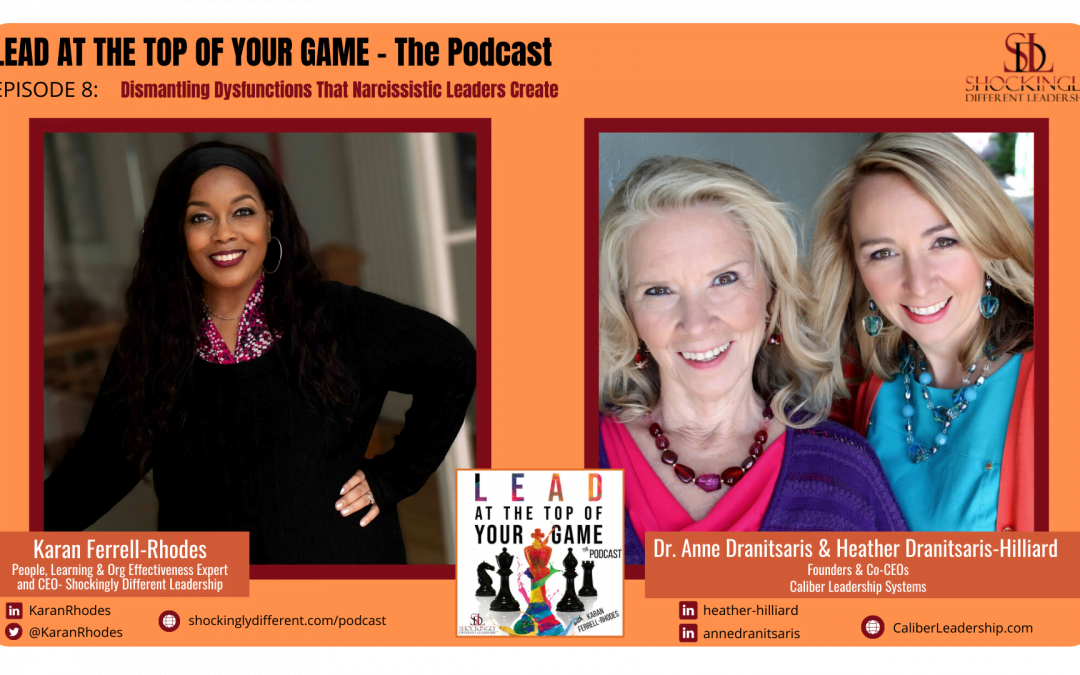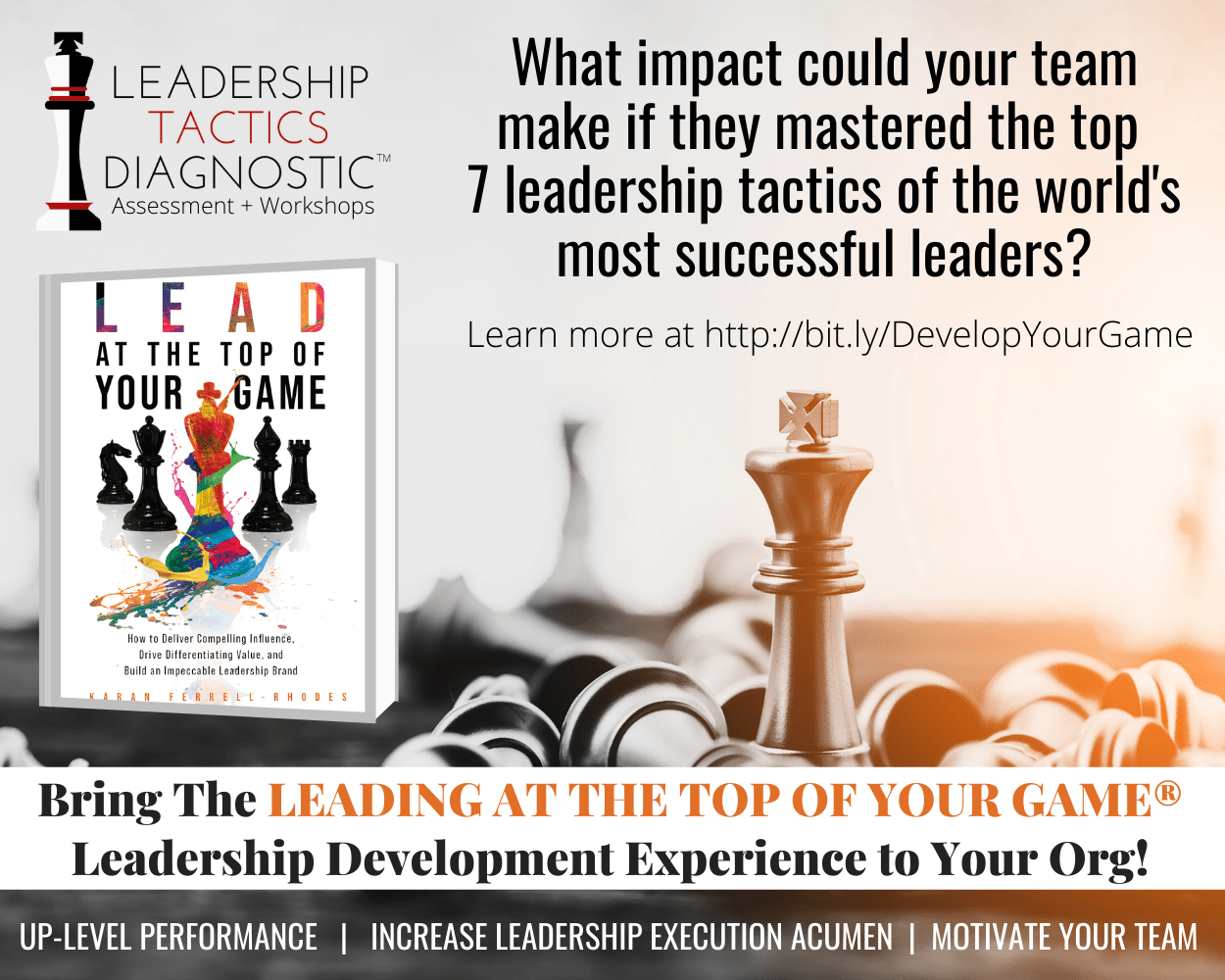IN THIS EPISODE . . . .
Unfortunately, narcissistic executives are everywhere. The most effective leaders today understand how to navigate collaborating with narcissistic leaders, while also lessening the impact of their behavior on the broader team or stakeholders.
Dr. Anne Dranitsaris and her daughter, Heather Dranitsaris-Hilliard, share how to dismantle such dysfunctions in leaders and heal the organizations impacted by their behavior.
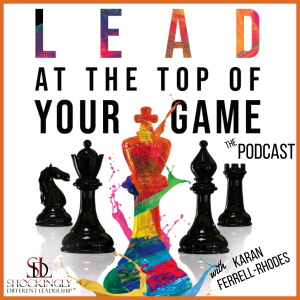
Posted by
SDL Media Team
LISTEN, LIKE & SUBSCRIBE ON YOUR FAVORITE PODCAST PLATFORM

SURPRISE!
A Free Gift From Karan To You
Rather view our video podcast?

WHAT TO LISTEN FOR:
- Learn about the behaviors of narcissistic leaders and how they can destroy a work environment
- How leaders can increase followership of their team members
- Anne and Heather’s Fun Facts – jigsaw puzzles, ABBA and gardening
“In the school systems, students never had to get to mastery, so as leaders, they now frequently struggle.”
FEATURED TIMESTAMPS:
[03:44] Hear how Heather found her mother 27 years after being given up for adoption.
[07:55] How the behaviors of narcissistic leaders and how they can destroy a work environment
[24:45] Anne and Heather’s entry into the LATTOYG leadership playbook– “Striving Styles”.
[30:00] Signature Segment: Which of the leadership tactics most resonates with Anne and Catherine
[33:03] Signature Segment: Full Disclosure
[40:49] Signature Segment: Karan’s Take
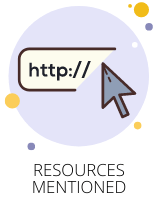
ABOUT DR. ANNE DRANITSARIS AND HEATHER DRANITSARIS-HILLIARD:
Dr. Anne Dranitsaris and Heather Dranitsaris-Hilliard, a mother-daughter team, are organizational and leadership development experts at Caliber Leadership Systems, a boutique consulting firm specializing in dismantling dysfunction. They are dedicated to empowering individuals, leaders, and organizations to achieve their potential by leveraging their expertise in the neurobiology of human development combined with system thinking approach.
Anne and Heather have worked with thousands of leaders and individuals from around the world, been featured in dozens of publications, spoken at professional conferences, and written several series of books on personality type and the brain based on the Striving Styles® and MBTI®.
LINKS FOR DR. ANNE DRANITSARIS AND HEATHER DRANITSARIS-HILLIARD:
- Website: https://caliberleadership.com
- Website: https://dranitsaris-hilliard.com/
- Dismantling Dysfunction Podcast: https://dranitsaris-hilliard.com/podcast/
- Link to Their Books: https://dranitsaris-hilliard.com/our-books/
PEOPLE & RESOURCES MENTIONED:
– Overview: The Lead at the Top of Your Game Leadership Development Experience
ADDITIONAL RESOURCES FOR YOU:
- Article on narcissistic bosses
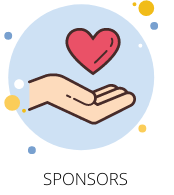

Episode Sponsor
This podcast episode is sponsored by Shockingly Different Leadership, the leader in on-demand People, Talent Development & Organizational Effectiveness professional services, all designed to up-level leader capability and optimize workforces to do their best work.

Episode 8 | Dismantling Dysfunctions That Narcissistic Leaders Create w/ Dr. Anne Dranitsaris and Heather Dranitsaris-Hilliard
Heather Dranitsaris-Hillard 00:00
So again, that’s a defense that comes out as an event. What it does is it shuts people down, stops innovation keeps things in the status quo and keeps him very happy because he gets his agenda for not having to change and not evolve and not grow. just gotten that by the by the behavior he put out.
Voiceover 00:21
Welcome to the “Lead at the Top of Your Game” podcast, where we equip you to more effectively lead your seat at any employer, business, or industry in which you choose to play. Each week, we help you sharpen your leadership acumen by cracking open the playbooks of dynamic leaders who are doing big things in their professional endeavors. And now, your host, leadership tactics and organizational development expert, Karan Ferrell-Rhodes.
Karan Rhodes 00:57
Hey there superstars! This is Karan and welcome to today’s episode! Narcissism is when someone is so focused on their own self-interests that they consistently ignore or avoid the needs of those around them. Unfortunately, narcissistic executives are everywhere, but you should know that narcissism is actually a personality disorder that has a wide spectrum – ranging from occasional behavior (that we all are guilty of), to extreme behavior, which negatively impacts relationships and workplace dynamics. The most effective leaders today understand how to navigate collaborating with narcissistic leaders, while also lessening the impact of their behavior on the broader team or stakeholders. On today’s show, we have an incredible mother-daughter duo who are experts in both dismantling dysfunctions in organizations, as well as coaching leaders on how to diminish any narcissistic behaviors which may be detrimental to both them and those they serve. Dr. Anne Dranitsaris and her daughter, Heather Dranitsaris-Hillard are the founders of Caliber Leadership Systems, where they use the neurobiology of human development to help improve workplace cultures. Be sure to listen to their addition to our leadership execution playbook and my closing segment called “Karan’s Take”, where I share a tip on how to use insights from today’s episode to further sharpen your leadership acumen. And now, enjoy the show! Hello, my superstars! Welcome to today’s episode. We are so pleased to have on today’s show a truly dynamic and tremendous mother and daughter duo. I am so pleased to introduce you to Dr. Anne Dranitsaris and her daughter, Heather Dranitsaris-Hilliard, and I think I might have murdered their last name, so please forgive me for that. But they are both the leaders of caliber leadership systems who are the, you know, absolutely foremost experts in neuropsychology of leadership, personality, and potential. So, welcome to the podcast Anne and Heather.
Heather Dranitsaris-Hillard 02:39
Thank you so much!
Anne Dranitsaris 02:39
Thanks, Karan!
Karan Rhodes 02:45
It’s so good to have you today. Well, are you ready to share a little bit of insight from your leadership playbook today with our listeners?
Anne Dranitsaris 03:32
Absolutely! We’re ready to go.
Karan Rhodes 03:36
Wonderful, wonderful! All right, well, to start us off, you know, for as much as you feel comfortable, I would love for you to give us a sneak peek into both your personal backgrounds and your professional journey up to today.
Heather Dranitsaris-Hillard 03:51
It’s interesting for us, because in our case, it’s a little bit intertwined–our personal and our professional journey–so as you pointed out, Anne and I are a mother daughter duo. And we started our business almost 25 years ago, with the intention of helping organizations and individuals to achieve their potential. What’s really interesting about our journey is Anne and I had only known each other for about three years before we had gone into business together because Anne had put me up for adoption when I was a baby and I didn’t reconnect with her until I was in my late 20s. And so, three years of building an initial relationship together, we discovered we had this shared interest in potential and people and helping organizations to succeed and we thought, “Hey, let’s bring this together!” And I’ll let Anne to pick up the rest of the story from there.
Anne Dranitsaris 04:49
But if you can imagine how… how wonderful it was, and is certainly from my perspective, because I’m meeting a woman, a young woman who happens to be my biological daughter and we have this shared interest and a lot of anxiety about “How do we form this?” and “How do we really connect?” That went away as we were able to both come at our interest, from my perspective, from the psychological perspective and Heather’s from that business systems perspective. And our first… our first shot out of the gate with our business was a model of people systems and results that you couldn’t have one without another. You couldn’t put a system into an organization without really attending to the people because without the combination of the two, something… some dysfunction was going to happen as a result. And so over time, we shared our… our individual competencies and blended a lot of the work that we did with leaders and with putting systems into organizations.
Heather Dranitsaris-Hillard 06:04
I always like to joke that she gave birth to me just to have an extension of her capability coming at it from a different lens, right? We’re like the perfect complement to each other, and so, it’s an interesting thing and our strengths is (unintelligible) like, we have very different strengths, we have different personalities. And yet, sort of the combination of the two is what’s made it really work for us, for our clients and,0 so our journey really has been woven together from a personal and professional level.
Karan Rhodes 06:32
That’s amazing and you took the words out of my mouth as, you know, even though you may not have known each other, you know, your entire lives, there’s definitely some synergies and… and I also feel a very kindred spirit with you, too, both because I was adopted as well. I was not fortunate enough to get to meet my birth mother but I do understand the dynamics with that bond, and I’m so happy that you all not only got to connect, but also advance your lives together in both business and on a personal level. So, that is such an inspirational story, and my second connection to you both is I understand you both are Sagittarius.
Heather Dranitsaris-Hillard 07:15
Yeah!
Karan Rhodes 07:19
(unintelligible) And what about the two of you?
Anne Dranitsaris 07:23
December 19th.
Karan Rhodes 07:24
Oh, (unintelligible)!
Heather Dranitsaris-Hillard 07:25
December 12th for me.
Karan Rhodes 07:29
Wow, amazing! Okay, this is going to be the episode of all time. Well, let’s move on. So, thank you so much for sharing, and let’s move on to talk a little bit about the fantastic work that you all are doing around leaders in general, and assessing and identifying and optimizing potential. And specifically, I know that you’ve done a lot of work on, you know, the dysfunction of narcissistic leaders. And I’d love to hear more about that.
Anne Dranitsaris 08:07
Sure! So, what we think about narcissistic leaders as… as any leader who comes out leadership, with a persona with their own agenda. And when we talk about personas, we talk about the image that somebody creates in order to have the world think of them in a particular way in and these days, we find that more leaders are… are aspiring to be great leaders than actually driving for results or trying to be as effective as leaders are, or even to know what they’re doing with people. And so, when we see people who… who lack emotional intelligence, they lack self awareness, they’re very image driven, get defensive very easily, have to have things their way, a whole range of people fall into that spectrum of narcissistic leadership dysfunction because we’re not talking about the personality disorder, per se. We’re talking about a collection of behaviors that are specifically set to drive the solo agenda of that leader.
Karan Rhodes 09:15
And what are some of those behaviors that you’ve observed?
Heather Dranitsaris-Hillard 09:19
It’s interesting, because there’s a bit of a range around them, and we sort of… we talk a lot of them in terms of the… on the one side, we’ve got narcissistic leaders who are incredibly permissive. And so, because again, they’re being self protective, and they want their employees to think that they’re great and to think they’re a wonderful leader, and so, they don’t manage their performance. They don’t resolve conflict; they don’t set boundaries. They… they tolerate all kinds of bad behavior, including insubordination from their employees. And so, that’s kind of on that permissive side and we see a lot of that in organizations. We also see them on the other side which is that more autocratic approach where they’re, you know, command and control, and you have to do it my way. And, you know, the bullying and the devaluation of others. I think about one of our clients all the time, he, you know, say things like, “You know, what do you think, you know? That’s just stupid. And why would you think that we would do that? You’re gonna embarrass us.” And, you know, and again, from that it’s self protective, right? Whatever we’re working on or trying to do, we frightened him in that moment. And so, he comes out guns blazing, right? Even you’re making this up, and… and so, again, that’s a defense that comes out as an… what it does is it shuts people down, stops innovation, keeps things in the status quo, and keeps him very happy because he gets his agenda for not having to change and not evolve and not grow–just gotten that by the… by the behavior he put out. And… and so, those are just some of them. I mean, there’s… there’s… we can get into specifics, but we do tend to look at it on those two sides of the coin, where we’ve got these leaders that are so hands off and fostering entitlement in their employees. And, you know, and those that are, again, autocratic and equally challenging to work with, but both of them coming from that same place of the… the narcissistic dysfunctions.
Karan Rhodes 11:09
And the extreme sides of the spectrum are both very detrimental to organizations, correct?
Anne Dranitsaris 11:15
Yes, absolutely.
Heather Dranitsaris-Hillard 11:16
Yep.
Anne Dranitsaris 11:17
Because it starts with the dysfunction of the leader’s behavior, and then, it becomes systemic. You see, as Heather says about… about how that more autocratic, domineering behavior shuts down innovation, whereas permissive leadership stops productivity in and getting results in a timely fashion. So, all of these… these behaviors were, simply put, a dysfunction or simply, any action that’s out of alignment with the expected normal behavior for a leader. And when leaders don’t manage performance because they’re afraid to, their pattern of fear causes them to behave in ways that they get to be safe, which is their agenda, at the expense of the organization, and its people.
Karan Rhodes 12:07
Wow, insane! Insanely, it’s a lot to deal with, I think. Especially for, like senior executives, that these type of behaviors have been brought to their attention by various staff or what have you. Let’s peel back the layers of the onion a little bit. What do you all recommend organizations or leaders do in this case? I mean, the has some tools or tips or guidance on how they should first approach these types of leaders.
Heather Dranitsaris-Hillard 12:40
So, one of the places that we always come in and go after is “What are the leaders complaining about?” because that’s usually, to us, that’s kind of like the surface symptom saying, “Hey, there’s dysfunction here because the leaders are complaining about the same things over and over again.” And… and I kid you not, we have clients where they’ve been complaining about the same people or the same situation for 9-10 years, and these are the executives of the organization. So… so while we talk about it from “What do we need to do about it?” it’s like, we start with those places where they’re complaining because that’s where they’re being most self self-protective, where they feel the most powerless to actually step in and lead and it’s what we most need to get them to do. And so, if they’re complaining about, you know, another member of the executive team, then it’s… we help them see, “Well, what is the actual issue? So what is underneath that?” And… and then we look at what is it that they’re afraid to do. Is it because they don’t know how? They haven’t developed up? Which a lot of these dysfunctions come from a developmental gap? Do they not know what to say, you know? And so, we sort of look at it from that perspective of trying to come up with a solution that’s actionable in order to move through that particular dysfunction, and it can be anything from us helping them figure out kind of a plan of attack that… and then, being there with them to help them to deliver it while they build up their skills to sometimes even calling them out. It’s funny, we… we say to our clients a lot of the times when they’ll complain about something, we’ll say, “You know that’s insubordination, right?” I go like, “Oh, yeah!” Because people have forgotten about that word. I said, when I started working, you can get fired for insubordination, righ? And it’s like, why are you in tolerating them at being insubordinate? And they’re like, “Oh, I never thought of it that way.” So there is, to Anne’s point, like the… the lack of emotional intelligence, the lack of self awareness, that not sort of looking at the behavior and going, “Hmm, how am I contributing to that?” so that… so those are a number of pieces, you know, and you can… can fill in some more but it’s… I… we do sort of joke about it as like, “Tell us… bring your leader’s complaints, and then we can come in and root out the dysfunction because the complaints are really indicative to us as to where the deepest dysfunction is exists in that point in time.”
Anne Dranitsaris 14:52
Well, and to Heather’s point about power and leaders feeling helpless, it’s really a… it’s surprising to many people when we talk about leaders feeling like they don’t have the right, they don’t feel entitled, again, looking at that narcissistic defense of “If I say something, somebody’s going to be mad at me; they’re not going to like me. I’m not entitled to even say, you know, please arrive on time.” We have a contract, you see, you’ve agreed to do this. And they don’t feel entitled to give expectations, or hold people accountable for fear that they’re going to leave, for fear of a negative consequence to themselves. And because many leaders don’t have that much self-awareness, they don’t even know they’re afraid. They won’t admit that they’re afraid to say something. They find all kinds of ways of blaming the employees. “Damn entitled employees!” You know, “They’re coming with all of these expectations, what’s wrong with them?” without looking and saying, “You know, this is my responsibility to develop these people into really solid-functioning employees who know how to follow.” Instead, they back off and avoid it and complain about it.
Karan Rhodes 16:20
You are so correct, because I see it. I’m sure you do, too, in your practices when you are all consulting. And even just opening up the line of communications a bit more and deepening trust with their employees could really go a long way so they can have those critical conversations to help gain followership for what they’re trying to do. Do you agree?
Heather Dranitsaris-Hillard 16:46
Yeah, we do talk about that notion of followership and how us as leaders, it’s our responsibility to cultivate that and develop it up in our employees. So, if our employees come to us and they haven’t developed that skill set, then we need to support those employees to develop that skill set but that means we, as leaders, have to give them something to follow. And… and so we talk a lot about… with our clients, it’s like you don’t give information; you give direction or you give instruction. And you’re explicit in that direction and that instruction because information, there’s this tendency again because, you know, I’m not comfortable exercising the authority that comes with my leadership role. And again, this is part of this dysfunction. And so, I’ll say things like, “Can you help me with this? or, you know, “We need to get this done without going into that. We need to get this done by this time. I want it done this way.” And, you know, “If you have any challenges, come back to me at least two days in advance.” Right? Like, we’re not directive when we’re stuck in this dysfunction because, again, our agenda is to not step out of our comfort zone and for a lot of these where it’s like, “Well… well, they’re gonna think I’m micromanaging.” And it’s like, “No, you’re leading.”
Karan Rhodes 17:57
Get comfortable with that, right? And get comfortable in this leading space—this is what you’re supposed to be doing.
Heather Dranitsaris-Hillard 18:07
So, uhm… And I’ll let Anne pick up on the micromanaging but it’s… it is that one—it’s like somehow employees, you know, understood the fact that if I simply tell my boss that they’re micromanaging, they’re going to back off, right? And so, it’s… it’s become a way that employees, in order to sort of, you know, get to do what they want to do, and to come up and show up at work the way they want to is by making these accusations, and the managers and leaders, they’re just not prepared to deal with that. And they don’t have the language or the words to say things like I just said, it’s like, “You know, no, not micromanaging, just leading. This is what directing performance looks like.” Right?
Anne Dranitsaris 18:49
You know, I… as you’re talking Heather, I’m remembering workshops that we did on performance management back in the early 90s where leaders who were being introduced to a different type of performance management where they were no longer just doing the performance review but they were actually going through the cycle of plan, do review where they had to sit down and talk to the people about setting expectations, and, you know, managing the performance throughout the year, et cetera. And how frightened managers were back then! Because something brand new was being imposed on them. That’s not how they manage performance before but if you fast forward now, 30 years, it really isn’t that different that managers and leaders still want to avoid having a relational conversation with their employees. So, leading people is not part of their mandate. When… when you think about it, it’s “Okay have I gone to the looking glass here,” because there’s no logic to this that you can’t just tell people what to do. We’re not living in the 50s or 60s.
Heather Dranitsaris-Hillard 20:05
We’re being more collaborative, yeah.
Anne Dranitsaris 20:07
Exactly, but because leaders didn’t drive the change and how they… they needed to lead, it was the employee. And employees continue to increase the expectations they have of leaders, and leaders still don’t get it that they have to develop. They still resist their own development.
Karan Rhodes 20:29
(unintelligible) and… and where this is impacting the organization is… man, I’m dating myself but, you know, 20 plus years ago, it was normal or expected for you to be in a role for two to four years, or longer within the organization. And these days, you know, workers are, I’ll just say hopping from opportunity to opportunity, in a very short timeframe. So if you don’t connect, and try to communicate, and always re-recruit your staff, they’re going to be looking for greener pastures pretty quickly, and you’re going to lose that, you know, that internal, you know, intellectual property that you’ve invested into your employees, right?
Heather Dranitsaris-Hillard 21:19
Yeah, we have a… you know, it’s interesting when we see that one because leaders… we… in all of our client organizations struggle with this. And… and part of it is, is if you think about it in the school system, they really didn’t have to get to mastery. It’s like they… they just kept moving sort of up and on and, you know, and I don’t know what it’s like elsewhere, but I know in Canada, a lot of our curriculum got simplified so that they didn’t have to struggle. And so, now, we bring these people into the workplace and it’s… and they think, “Okay, I’ve done it once; I’m done.” And so they don’t have this sense of practice to mastery, right? And it’s like… and so, we talk about that a lot in our organizations that we’re doing work with is it’s not about learning how to do it; it’s about mastering it and getting and actually taking pride in the level of mastery. And once you demonstrate mastery, then, you get to move on. But you don’t get to move on until you develop mastery because we all know what happens when you get promoted beyond your level of competence, right? We just look at leaders all around.
Anne Dranitsaris 22:17
You got it.
Heather Dranitsaris-Hillard 22:18
But it’s… it’s reintroducing that notion and that sense of pride so that the employee is less focused on “What’s my next?” and that’s my goal, right? My goal is mastery and to be able to demonstrate mastery and in… that does mean that leaders in organizations have to be more directive again, and definitive around what does mastery look like? And what’s the reward that comes with mastery? And what does that mean for your next career progression? But… but they’re so anxious to please their employees, that they’re saying, “Oh, there’s lots of opportunity for progression.” with… and not explaining anything else. Of course, the employees come in with these inflated sense of entitlement of “Well, you’re going to move me like this.” as opposed to saying like you, which is “Progression happens typically here. You’re in a job for at least a year and a half because we really want you to master it. Then, you’re gonna move here and we do bigger jumps between our promotions.” Like, whatever it is you do that creates that path for them to step into but we’re not defining that. And so, we’re just get sucked into this reacting to our employees emotions, or their, you know, what they feel emotionally entitled to without actually leading our employees and that’s really problematic. For… in all organizations that we work with, it’s a pattern that definitely has emerged and become more prevalent in the last 10 years.
Karan Rhodes 23:34
Yeah, absolutely, and you’re so right. And it’s important for leaders to, what I call, connect the red thread through their career progression because the… they need to communicate what is the next step, meaning what additional skills should they strive for and try to master and then, let’s talk about how. And to do that, what experiences do you need to be able to do that? How do we assess whether you’ve been successful or not?
Heather Dranitsaris-Hillard 24:10
Yeah, for sure.
Karan Rhodes 24:13
And then start connecting, okay, if you are successful, what other career paths might these additional skills open up for you? And it could be laterally, it could be growing deeper in current role, it could be, you know, a multitude of different ways but helping the… their direct reports connect those dots is going to be really important. Well, I would love for you all to share with the listeners a bit about your new book and some of the information that is contained there so they can run to Amazon and… and purchase it. Tell me about your book and the journey and the stories behind that.
Anne Dranitsaris 24:57
Okay, so a lot of what we’re talking about lays the foundation for a book on foundation about how… how all of this has evolved, how we’ve gotten to be where we are in terms of that gap between what employees expect and the increasingly dysfunctional behavior of… of leaders. Because they… they just don’t see themselves as… as contributing as we’ve talked about. But… But Heather and I, throughout our working with clients, what we’ve done is we’ve tracked different types of narcissistic behavior, as well as different dysfunctions, that come out of certain leadership styles based on psychological type theory. You’re probably familiar with the Myers-Briggs Type Indicator. In our… in our system, the striving styles, we… we talk about self protective personas, and… and looking predictively, at what each of the personas or temperaments of the personality type will naturally evolve into without training and development. So, we look at what each of the styles will create as a dysfunctional leadership style, and the organizational dysfunctions that ensue, and we have lots and lots of client stories to back up all of these dysfunctions because there are different… different personality types, as you know, different temperaments, and they don’t all lead with the same effectiveness in certain areas nor do they go into dysfunctional behavior in the same way.
Heather Dranitsaris-Hillard 26:46
Part of the reason why we sort of launched our podcast and our… you know, going after writing this book is that people in organizations, whether they’re in roles in HR or they’re in other leadership roles, and they can see the dysfunction but again, they feel overwhelmed to do anything about it, and there really isn’t a good fieldbook out there that says, “Okay, you’re struggling with the dysfunction of silos, this is exactly what you can do, right?” This is what… where it’s coming from because it is multipronged. And so it’s… like if you try and take a dysfunction and simplify it which we see clients do all the time; it’s what we call their magical thinking. Well, if we just get this person in, then it’ll all be better. And it’s like, no, then you’re just gonna do it all over again. So we’re sort of looking at it from that place of, you know, going back to the roots of our business which is we have to look at some of the systems that are in the organization that… that allow for it, and that processes, practices, all of those sorts of things but also, then, the people, right? The behaviors, where are they at in their development, what behavior is being tolerated, what behavior needs to be changed in order to move them away from it? And I go back to this example of silos. We have a client right now where we’re doing a really big organizational project to help break down silos, and silos are, you know, sort of this way but also between levels of leadership, there’s siloing there, too. And… and it’s really fascinating as… as we go in and we talk about it because the silos are there because the leaders are overly permissive and they don’t come out and say, “This is what it looks like, this is the way we do it here.” And they let people pick and choose and new people come into the organization, they decide to do a different way. So, we have to define what they want it to be and then we have to get them comfortable with articulating it plus holding people accountable to complying with it. So, that’s a lot that you’re sort of unpacking and you have to do it in steps so that they don’t get so frightened that they shut down and end up doing nothing. And so, but… but that’s what, you know, driving the book is like, “How do we give some really practical, based on all of our years of working with organizations and navigating to dismantle dysfunction, so that everybody–it doesn’t matter if you’re a mid-tier leader or you’re in HR–you know how to go after it, and to not just talk about it as, “Oh, there’s that big elephant called dysfunction.” It’s like, “Oh, I know what dysfunction that is and I know exactly what I need to do in order to be able to start to break it down in my organization.”
Karan Rhodes 29:16
Wow, your book sounds like a fantastic resource. Can you tell the listeners again the title of the book again?
Heather Dranitsaris-Hillard 29:23
“Dismantling Narcissistic Dysfunction”.
Karan Rhodes 29:26
“Dismantling Narcissistic Dysfunction”. Fantastic! Alright. Well, we will have links to that… your… how… I can’t even speak today. We will have links in the show notes on how the listeners can purchase that book and how to reach out to you all on your website as well if they need additional consulting in this area. I just have a few more questions to ask you all as we get ready to close out this episode. And, as you know, I recently released a book as well in the last year on leadership execution and I always love to ask, out of the seven tactics that I talked about in my book, which one of those kind of popped out for you all? And so, I’d love to ask you, both you two, out of the seven, was there one that, you know, really popped out as… although they all are important, but one that was… really resonated with you?
Anne Dranitsaris 30:29
Both of us selected the same one oddly enough and that… drive… driving from results. And when you think about it, Karan, it’s… we need to get back to the fundamentals of… of leading which have really stood the test in time is that… that we’re in business to achieve results.
Karan Rhodes 30:49
That’s right.
Anne Dranitsaris 30:50
And… and part of what leaders do in driving for results is engage people in the process of contributing to those results. And… and so, we see that as our, you know, it’s like our true north where energy moves towards and where we get everyone into alignment with, and if we don’t have that, if we’re just more laissez faire about things, and as Heather’s talked to a fair amount about, permissive. If we’re permissive, there’s no fire in the bellies of our employees.
Karan Rhodes 31:26
That’s right. That’s right.
Heather Dranitsaris-Hillard 31:29
And for me, that, you know, drive for results is, you know, I picked it because it’s the place where when leaders move away from that, it’s like that… everything falls apart, and they go into this conversation where it’s like, “Well, I can’t do that.” or “I can’t get this done.” or they’re not going to change and so all of the excuses and the blaming starts to come up. And… and so… but if I’m focused on driving for results, I’m looking to solution everything. So, there’s a solution for everything, and… and so I’m not going to get thrown off by the fact that there’s this barrier, that obstacle, or I have to get through three noes to get to my yes from my CEO who’s a little more traditionalist, status-quo-oriented. I’m driving for the result and I’m holding that in… and we see like quite literally like I think about this one client where they’ve had the same objective on their list for four years.
Karan Rhodes 32:21
And they haven’t moved the needle on that at all?
Heather Dranitsaris-Hillard 32:23
No! Where’s the drive for results people? Come on, right? And so, that’s the thing of… that, you know, better to have fewer things but really making sure you’re moving the needle on the things that are more important. And I think we’ve lost that; I think we’ve lost some of that even dialogue in organizations and employees where they, you know, they’ll start to push back and… because they’re not as results-oriented, right? And so, I think… I think that’s probably why I picked up on it. I see it as a big vacuum today for… in a lot of organizations where they’re just missing the… the drive for results.
Karan Rhodes 32:56
I love that, I love that. Well, I would also like to ask you a few fun questions for our final segment. And I promise there’ll be no gotcha questions. We call this segment “Full Disclosure”, but it’s fun. It’s just something to… that we’d love to learn a little bit more about our guests on the show. So, my first question for you both is… what is, for each one of you can answer, what is one hobby or activity that you do that others may not anticipate or expect you to do? What is something that you love that’s… to do that they may not guess that is part of your passions?
Heather Dranitsaris-Hillard 33:45
Well, I will… I can answer on behalf of both of us. We’re both puzzle geeks. We love to do jigsaw puzzles; we do a gazillion of them every single year. We trade them back and forth between the two of us and we buy them for each other at Christmas knowing that it’s going to make its way back to me if I give it to her and vice versa.
Karan Rhodes 34:11
That is amazing. Puzzles kind of frustrate me because my attention span is like this big so… but that is amazing that you absolutely love puzzles so I know what to get you both for… during the holidays. Alright, you two, what is the…
Anne Dranitsaris 34:30
And the…
Karan Rhodes 34:30
I’m sorry?
Anne Dranitsaris 34:31
The other that we share is we’re both avid gardeners.
Karan Rhodes 34:39
Oh, I am as well! Oh my goodness! We have more alike than we both know I have now (unintelligible) back.
Heather Dranitsaris-Hillard 34:49
I always say that because the work we do tends to be intangible, although we can see the evidence of it, but gardening you get to see the evidence of your work and you’re creating and you’re building and it’s, you know, sort of… anyway so that drive for results. My garden is my drive for results on the land.
Karan Rhodes 35:06
Me, too! Oh, it is so fulfilling to me as well as I watch and talk to my babies during the growing season. Alright, well, I would love each one of you to give me one song that is in your playlist if you listen to music. One song that you love of any type.
Anne Dranitsaris 35:31
Oh, I love anything by ABBA. ABBA! That’s the first thing that jumped into my mind. I’ve got lots but “Mamma Mia”.
Karan Rhodes 35:43
“Mamma Mia”! I can’t sing so I won’t even (unintelligible). (unintelligible) it’s fine. How about you, Heather?
Heather Dranitsaris-Hillard 35:56
You know, I think the one that first came into my mind, and I do have an affinity for songs that are very sort of aspirational, powerful, and I was just thinking, you know, “I’m coming out. I want the world to know.” What song is that? (unintelligible) is what we’re after in songs (unintelligible).
Karan Rhodes 36:22
I Iove it, I love it. Alright, one last question for you both. What is one app or resource that you just can’t live without? And it can be personal or professional.
Anne Dranitsaris 36:29
Oh, I would say for me, it’s Carolyn Myss’ myss.com.
Karan Rhodes 36:37
Myss.com? Tell me about that.
Anne Dranitsaris 36:39
Myss is a… is one of my… one of… one of the people I follow relative to transformational thoughts, spiritual growth and development, archetypes, sacred contracts, those types of really inspirational personal growth-oriented practices.
Karan Rhodes 37:00
Oh, I’m gonna have to look that up and put it in show notes. Wonderful! And you, Heather?
Heather Dranitsaris-Hillard 37:06
Oh, now, she’s just thrown me for a loop here.
Karan Rhodes 37:12
Why does it have to be that? I mean it sounds fantastic but…
Heather Dranitsaris-Hillard 37:16
I’ve got a great one; “Find My iPhone” or “Find My Whatever” to track my daughter. It’s to track my daughter.
Karan Rhodes 37:27
That is fascinating.
Heather Dranitsaris-Hillard 37:30
I’ve turned 20, and it’s, you know, the communication of “Oh, Mom, I’m not coming home tonight because I’m outside. Just go on. And I’m like, “Where is she? Okay, looks like she’s somewhere safe.”
Karan Rhodes 37:41
So, can you tell… talk to my daughter who’s in her early 20s, too, so she understands that I’m not the only one.
Heather Dranitsaris-Hillard 37:49
It’s about safety; it’s not about trust. It’s about safety.
Karan Rhodes 37:53
That’s right, that’s right. Alright, and then, the last item, and it’s not for you, you know, turnabout is fair play. I love to give my guests an opportunity to turn the tables on me and ask me one question. So, either one of you have a question you’d love to ask me?
Anne Dranitsaris 38:12
What inspired you to do podcasting with guests?
Karan Rhodes 38:19
Oh, that’s a great question, and I’ll be honest with you, and I… I thought about it for about three years, and I’ve fought it. I fought the urge but honestly, my family friends and colleagues said that I’d be, you know, very fabulous with it. As you can tell, I love to talk and collaborate and learn from others and share that information with others, and it just seemed like a decent natural vehicle to be able to do so and it was much in line with the organizational effectiveness work that our company does. And it just seemed like just a natural add-on. So, once I bit the bullet and said, “Yep, this is the right thing to do to add to the strategy.” And, you know, fast forward to those three years it was, you know, a million podcasts out there but I’ve always, you know, I follow them. I listen to them religiously when I work out so I believe we will attract the audience we need to to help in the way that we want to have a positive impact on leaders and organizations.
Anne Dranitsaris 39:29
Beautiful. Thank you!
Karan Rhodes 39:31
Awesome! Well, thank you both so much for your time, your gift of time. This has been fabulous. I literally blinked my eyes and I was looking at the time, and boy, have we had some great conversation. So, thank you both so much for joining us and listeners, we will have all their information in the show notes. You will want to check it out and check out their website, learn more about the consulting practice, definitely, get the book, and I’m sure if you reach out to them, there’s some value that they can bring to your organization. So, once again, Anne and Heather, thanks so much for being at the “Lead At The Top Of Your Game” podcast.
Anne Dranitsaris 40:14
Thanks so much, Karan! We appreciate being on your show.
Heather Dranitsaris-Hillard 40:17
Yeah. Thanks, Karan, terrific fun. Thank you!
Karan Rhodes 40:24
I hope you enjoyed our conversation today with Dr. Anne Dranitsaris and her daughter, Heather Dranitsaris-Hillard, founders and CEO of Caliber Leadership Systems. Links to their bio, their entry into our Leadership Playbook and additional resources can be found in the show notes, both on your favorite podcast platform and at LeadYourGamePodcast.com. Now, for “Karan’s Take” on today’s topic of dismantling dysfunctional narcissistic behavior in leaders: Today, I want to share a few tips on how you can deal strategize dealing with such challenging behaviors in others. Navigating a relationship with a leader with narcissist tendencies can be deeply frustrating and distressing. In their quest for control and admiration, narcissistic people may manipulate and exploit others, often damaging their self-esteem and even aiming to alter their sense of reality. Arguing with a narcissist about their actions often proves to be futile. A more successful approach is to educate yourself about the medical condition of narcissism. For most of us, the underlying psychology of the narcissistic personality is extremely difficult to comprehend, but knowledge is power, and there are many subject matter expert and websites that can give you advice. Establish boundaries and emotionally distance yourself. Don’t try to argue, justify, or explain yourself. Recognize that you may not be able to control your feelings about a person, but you can control how you respond to them. Trying aligning your successes with theirs. Such individuals are always seeking validation of their thoughts, so aligning your goals with theirs increases the chances of their support of your efforts. Lastly, don’t expect loyalty- it’s frequently not in them, don’t take things personally, and if the situation becomes unbearable, have the courage to make a change in department or employer. If you enjoyed this leadership topic, more info on developing stronger leadership acumen can be found by clicking on the signature program link on our website ShockinglyDifferent.com. Thanks for listening and see ya next week!
Voiceover 43:17
And that’s our show for today. Thank you for listening to the “Lead at the Top of Your Game” podcast where we help you leave your seats at any employer, business, or industry in which you choose to play. You can check out the show notes, additional episodes, bonus resources, and also submit guest recommendations on our website at leadyourgamepodcast.com. You can follow me on Twitter, Facebook, Instagram, and LinkedIn by searching for the name Karan Rhodes with Karan being spelled K-a-r-a-n. And if you liked the show, the greatest gift you can give would be to subscribe and leave a rating on your podcast platform of choice. This podcast has been a production of Shockingly Different Leadership, a global consultancy which helps organizations execute their people, talent development, and organizational effectiveness initiatives on an on-demand project or contract basis. Huge thanks to our production and editing team for a job well done. Bye for now.

Want to be a LATTOYG Podcast Guest?

Want Karan to be Your Podcast Guest?

Want to be a Podcast Sponsor/Advertiser?
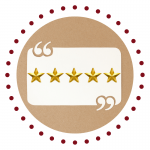
Like the Show? Please Leave a Review
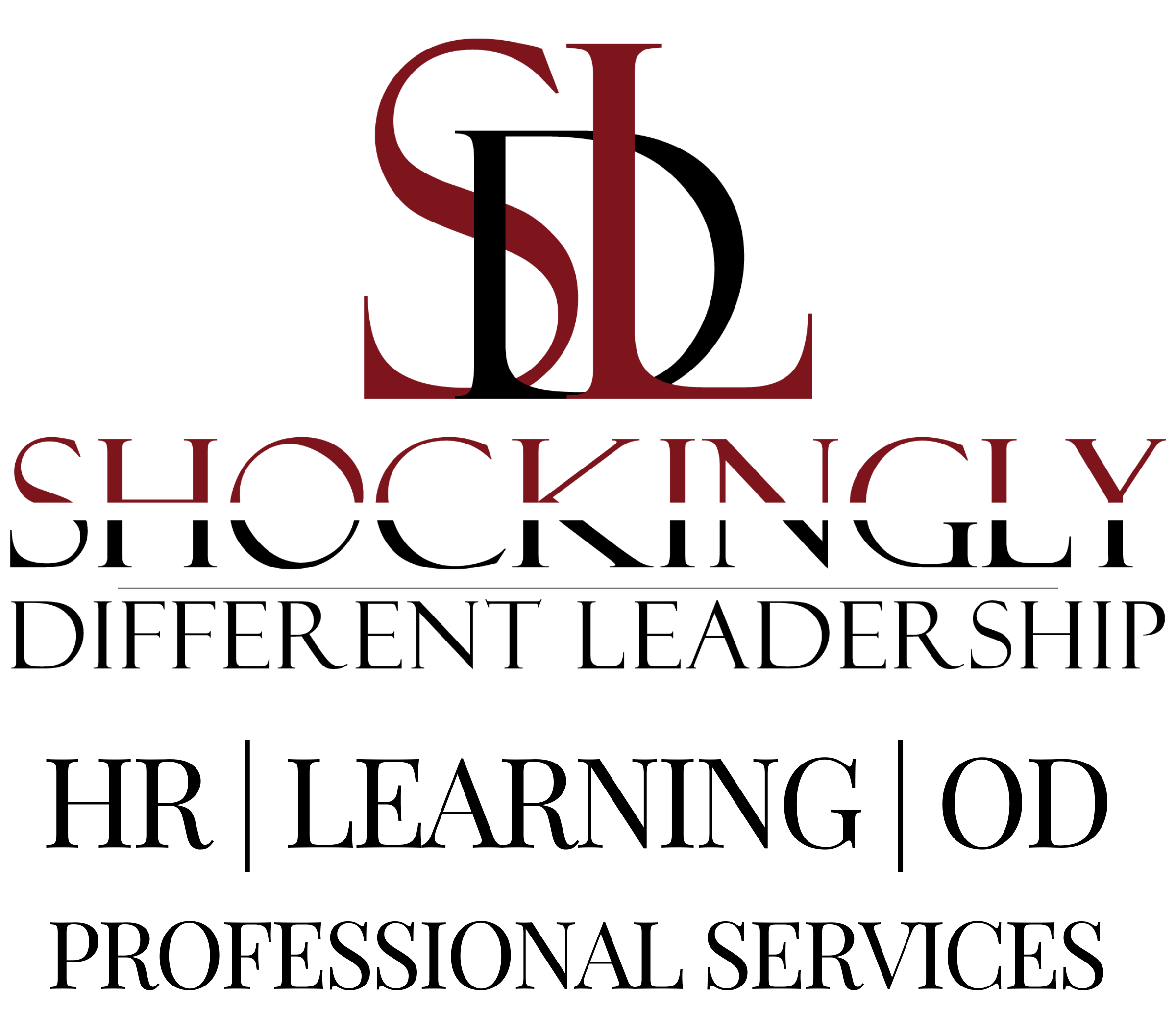
#KeepInTouch
via our podcast alerts
Subscribe now to discover why thousands of monthly listeners who are passionate about doing their best work prioritize time each week to listen to the Lead at the Top of Your Game podcast.
#AboutSDL
Shockingly Different Leadership is a human capital professional services consultancy that provides organizations access to the best consulting expertise in the areas of Talent Development, Organizational Development, and Human Resources – on an on-demand, project, or contract basis.
#WhereToFindUs
MAILING
4480-H South Cobb Drive
PMB 219
Smyrna, GA 30080
PHYSICAL
2121 NewMarket Parkway
Ste. 108
Marietta, GA 30067
#ContactOptions
Customer Service Email:
service@shockinglydifferent.com
Call or Text:
770-384-1103
#Office Hours
MON-FRI
8:30 AM – 6:30 PM
Weekends By Appointment

